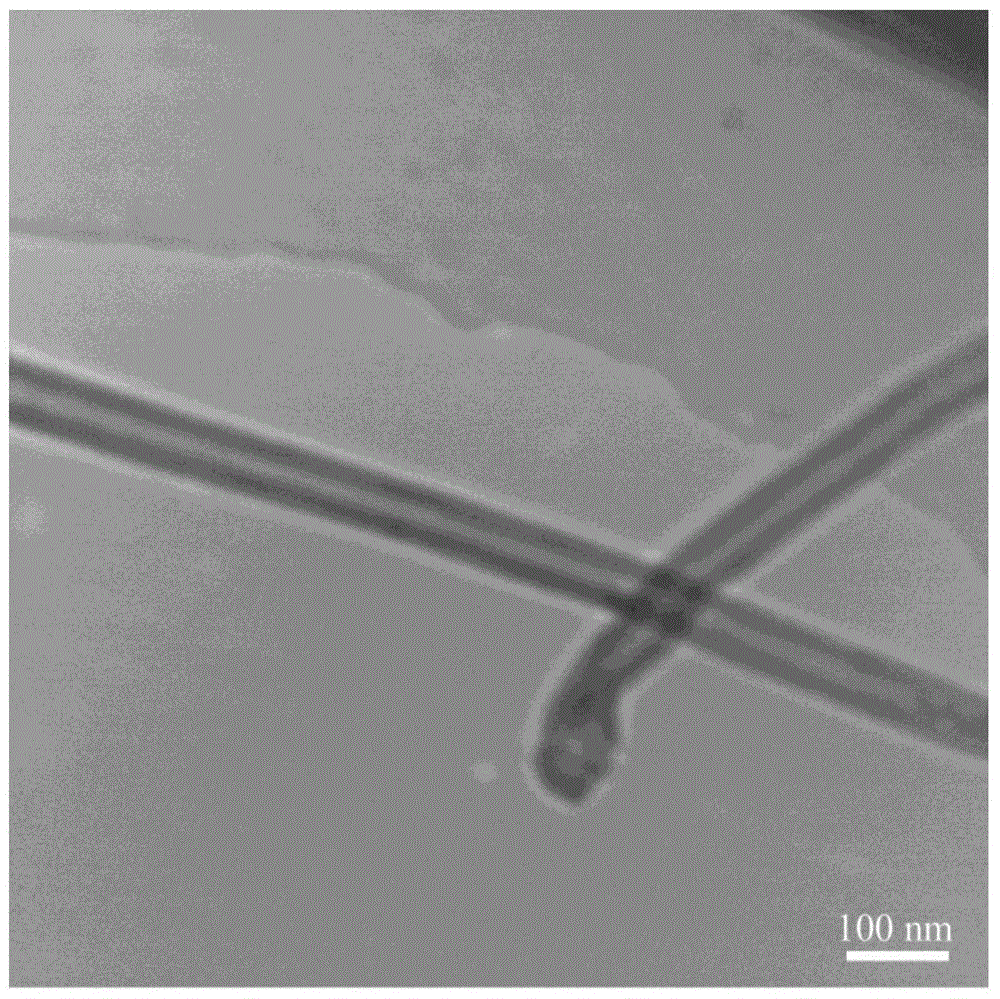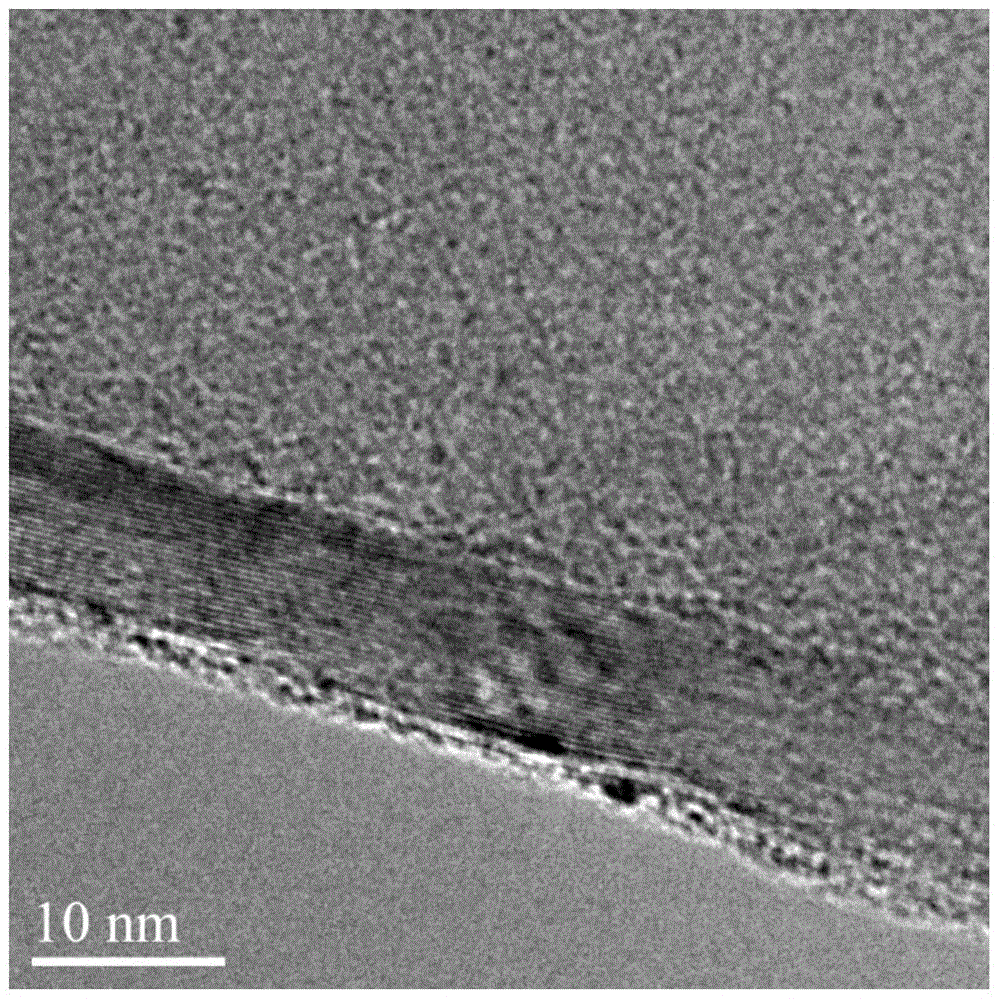Method and device for preparing carbon nano tube by taking high-sulfur heavy oil as carbon source
A carbon nanotube and content technology, applied in nanotechnology, nanotechnology, chemical instruments and methods, etc., can solve the problems of catalyst agglomeration, low carbon nanotube purity, and reduced product purity, etc. The effect of poisoning the catalyst
- Summary
- Abstract
- Description
- Claims
- Application Information
AI Technical Summary
Problems solved by technology
Method used
Image
Examples
Embodiment 1
[0030] (1) 0.7275g (0.0025mol) of nickel nitrate hexahydrate and 4.8g (0.01875mol) of magnesium nitrate hexahydrate were dissolved in 50mL (0.8563mol) of absolute ethanol to obtain a catalyst precursor;
[0031] (2) Add the catalyst precursor at 2 μL / cm 2 The density is evenly sprayed on the 304 stainless steel substrate after ultrasonic cleaning with deionized water, and dried at 20 ° C to obtain a nickel-magnesium catalyst substrate;
[0032](3) The nickel-magnesium catalyst substrate is placed in the center of the high-temperature deposition area of a dual-temperature zone horizontal tube furnace, and a small porcelain boat containing 0.1282g of Kuwait vacuum residue is placed in the dual-temperature zone horizontal tube furnace. In the center of the low-temperature vaporization zone of the type furnace, flanges with pipelines are used to close the two ends of the dual-temperature zone tube furnace; the composition of the vacuum residue in Kuwait is shown in Table 1;
[...
Embodiment 2
[0040] (1) 0.7275g (0.0025mol) nickel nitrate hexahydrate and 3.2g (0.0125mol) magnesium nitrate hexahydrate were dissolved in 40mL (0.6851mol) absolute ethanol to prepare a catalyst precursor;
[0041] (2) Add the catalyst precursor at 20 μL / cm 2 The density is evenly sprayed on the 304 stainless steel substrate after ultrasonic cleaning with deionized water, and dried at 30 ° C to obtain a nickel-magnesium catalyst substrate;
[0042] (3) Place the nickel-magnesium catalyst substrate in the center of the high-temperature deposition zone of a dual-temperature zone horizontal tube furnace, and place a small porcelain boat containing 0.35g of Tahe atmospheric residue in the dual-temperature zone horizontal furnace. In the center of the low-temperature vaporization zone of the tube furnace, flanges with pipelines are used to close both ends of the tube furnace with dual temperature zones; the composition of Tahe atmospheric residue oil is shown in Table 2;
[0043] (4) Use the ...
Embodiment 3
[0050] (1) 0.7275g (0.0025mol) of nickel nitrate hexahydrate and 3.84g (0.015mol) of magnesium nitrate hexahydrate were dissolved in 70mL (1.1988mol) of absolute ethanol to obtain a catalyst precursor;
[0051] (2) Add the catalyst precursor at 10 μL / cm 2 The density is evenly sprayed on the 304 stainless steel substrate after ultrasonic cleaning with deionized water, and dried at 35 ° C to obtain a nickel-magnesium catalyst substrate;
[0052] (3) The nickel-magnesium catalyst substrate is placed in the center of the high-temperature deposition area of a dual-temperature zone horizontal tube furnace, and a small porcelain boat containing 0.1282g of Kuwait vacuum residue is placed in the dual-temperature zone horizontal tube furnace. In the center of the low-temperature vaporization zone of the tube furnace, use flanges with pipelines to close the two ends of the dual-temperature zone tube furnace;
[0053] (4) Use the hydrogen-argon mixed gas to discharge the closed air in...
PUM
| Property | Measurement | Unit |
|---|---|---|
| diameter | aaaaa | aaaaa |
| diameter | aaaaa | aaaaa |
Abstract
Description
Claims
Application Information
 Login to View More
Login to View More - R&D
- Intellectual Property
- Life Sciences
- Materials
- Tech Scout
- Unparalleled Data Quality
- Higher Quality Content
- 60% Fewer Hallucinations
Browse by: Latest US Patents, China's latest patents, Technical Efficacy Thesaurus, Application Domain, Technology Topic, Popular Technical Reports.
© 2025 PatSnap. All rights reserved.Legal|Privacy policy|Modern Slavery Act Transparency Statement|Sitemap|About US| Contact US: help@patsnap.com



